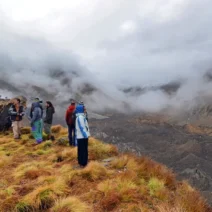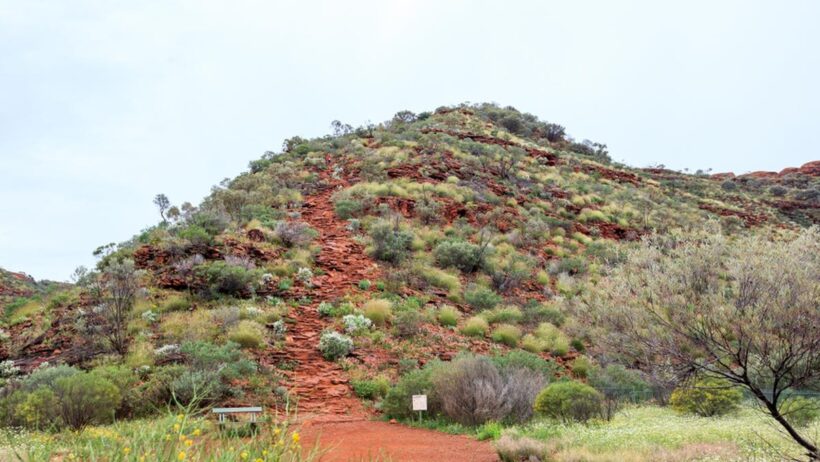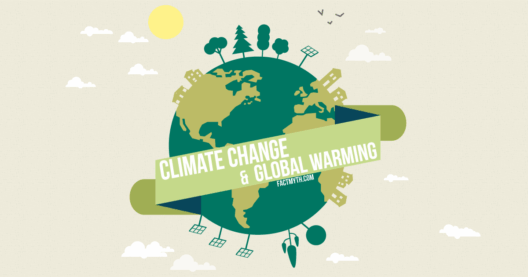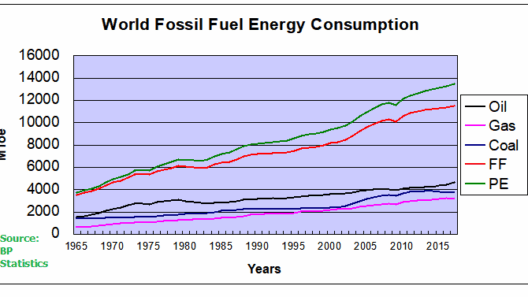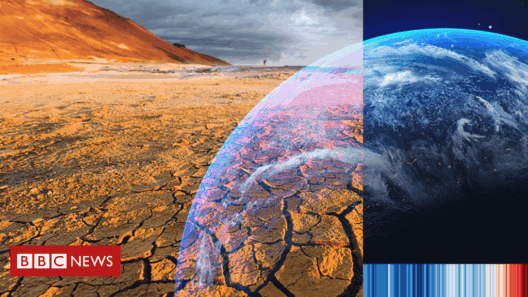The vast expanse of Australia’s Outback is a realm defined by extreme conditions—an arid wilderness characterized by its striking landscapes and unique ecosystems. This iconic biome, often viewed through lens of rugged beauty and untamed wilderness, serves as a stark reminder of our planet’s fragile equilibrium. However, beneath this veneer of desolate charm lies a more ominous narrative: the pervasive impacts of global warming are wreaking havoc on this distinctive environment, the ramifications of which are both immediate and long-lasting.
Australia’s Outback is not merely a barren land, but rather a complex tapestry woven from an array of ecological and geological threads. This biome encompasses diverse habitats including red deserts, eucalyptus forests, and sparse grasslands, all of which provide vital ecosystems for myriad species. Yet, as global temperatures ascend, conventional patterns of weather and precipitation—foundational to the Outback’s ecosystems—are becoming increasingly unpredictable.
The phenomenon of global warming manifests itself in the Outback through intensified droughts and irregular rainfall. Historically, the region exhibits characteristic aridity, with little precipitation; however, recent trends have demonstrated dramatic fluctuations. Extended dry spells are now commonplace, punctuated occasionally by torrential rains that lead to flooding, thus disrupting the delicate balance of flora and fauna. Such erratic shifts not only affect water availability but also jeopardize food sources for animals and humans alike, fostering an environment ripe for ecological collapse.
Moreover, the augmented temperature is exacerbating the likelihood of wildfires—a reality that is transforming the landscape and the living organisms within it. The Outback, dominated by flammable vegetation such as spinifex grass and eucalyptus trees, faces an escalating risk of fires that are more severe and more frequent. Such blazes obliterate habitats, decrease biodiversity, and release vast amounts of stored carbon back into the atmosphere, further fuelling the very climate crisis that incites them.
Species endemic to the Outback, from the resilient emu to the elusive bilby, find themselves in a precarious position; their adaptations to survive in this harsh environment now seem inadequate in the face of rapid climatic shifts. Many species are experiencing population declines, while others face the risk of extinction. The plight of these unique creatures evokes a sense of urgency; safeguarding their existence is not merely an act of conservation but an endeavor critical to preserving the ecological integrity of Australia’s unique biome.
The interconnectedness between the Outback’s flora and fauna underscores the fragility of this ecosystem. Native plants have evolved to endure drought, but with climate change altering precipitation patterns, their survival is threatened. For instance, species such as the ghost gum and the desert oak may fail to thrive if the temperature continues to soar beyond their physiological limits. This has broader implications, as plants form the cornerstone of the food web; their decline can have cascading effects on herbivores, predators, and pollinators, ultimately leading to an ecological imbalance.
Additionally, as climate change escalates, the potential for invasive species to infiltrate and dominate the Outback increases. Non-native flora and fauna often outcompete local species for resources; this is especially troubling in an environment already strained by changing climatic conditions. The introduction of invasive species is like adding fuel to the fire of ecological distress, further degrading the integrity of the Outback’s unique ecosystems.
The socio-economic dimensions of global warming’s impact on the Outback also warrant scrutiny. Indigenous communities, who have thrived in these lands for thousands of years, are experiencing profound changes in their livelihoods and cultural practices. Their traditional knowledge, which has guided sustainable interactions with the environment, faces erasure as the climate alters the very landscape they traverse. The cultural dislocation caused by environmental change cannot be understated; it jeopardizes not just a way of life but the rich heritage woven into the land itself.
Confronting the Outback’s fury necessitates a multifaceted approach. Effective mitigation strategies must be carved out, with a focus on reducing greenhouse gas emissions at a global scale. Policymakers must be urged to recognize the intricate balance of ecosystems and the importance of safeguarding them from the perils of climate change. Furthermore, public awareness campaigns that highlight the impacts of global warming on the Outback can galvanize community action and foster a sense of shared responsibility.
Moreover, restoring ecosystems impacted by climate change should be prioritized. Land rehabilitation efforts, including reforestation initiatives and the removal of invasive species, are vital for fostering resilience within the environment. Harnessing the wisdom of Indigenous peoples in conservation practices can further enhance these strategies, as they possess invaluable knowledge about the land and the species that intersect with it.
In conclusion, the Outback serves as an emblem of Australia’s natural heritage—an awe-inspiring realm that is now confronting the wrath of climate change. Global warming’s insidious grasp threatens not only the fragile ecosystems but also the cultural identity intertwined with this land. It is imperative that collective efforts are mobilized to address these unprecedented challenges. Safeguarding the Outback is fundamental not solely for Australia but for the global community as a whole, as it encapsulates the existential struggle against climate change faced by living organisms on our planet.

